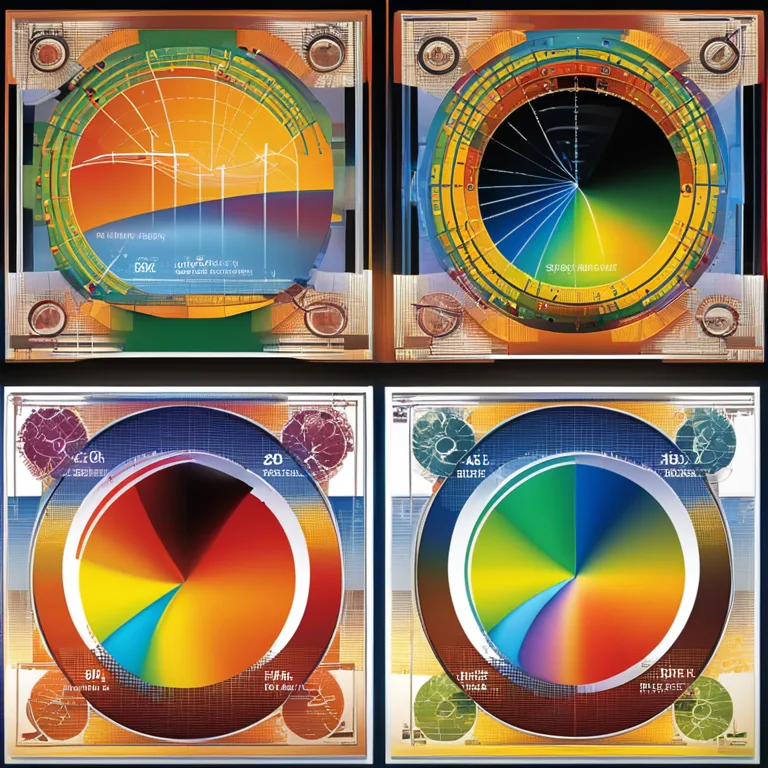
The Rhythms Within: Tapping Into Your Biological Clock
Discover the secrets of your biorhythm and its influence on your daily life. Learn how you can harmonize with your natural biological clock for better health and well-being.
article by Adrian Wallace
Introduction to Biorhythms
Biorhythms are considered the invisible waves of energy that govern our physical, emotional, and intellectual cycles. This concept suggests we have built-in clocks that influence our ability to perform, our moods, and our decision-making processes. These cycles start from the moment we are born and ebb and flow throughout our lives in predictable patterns. The idea of biorhythms as influential forces emerged in the late 19th century and has since percolated through various wellness and self-help communities.

The Three Primary Cycles
The cornerstone of biorhythm theory lies in three primary cycles: physical, emotional, and intellectual. The physical cycle, with a period of 23 days, governs our vitality, strength, and overall well-being. Following a 28-day course, the emotional cycle oversees mood swings, creativity, and perception of the world around us. Lastly, the intellectual cycle, which runs every 33 days, impacts our cognitive functions, decision-making capabilities, and communication skills. Understanding these cycles enables individuals to anticipate fluctuations in performance and mood.

Scientific Debate and Support
The scientific community has been divided on the empirical support for biorhythms. While some researchers argue that biorhythms lack rigorous scientific validation, others have observed correlations that lend credibility to the theory. With technological advancements, including wearable tech that monitors physiological states, there is renewed curiosity and potential for deeper insights into how our natural rhythms align with biorhythmic principles. Futuristic developments may well include advanced algorithms to optimize our daily routines in concert with personal bio-cycles.

Practical Applications in Daily Life
Practitioners and enthusiasts assert that by being aware of one's biorhythms, one can make more informed decisions at optimal times. For example, choosing to undertake a physically demanding task when one's physical biorhythm is at a peak, or avoiding critical negotiations during a low phase of the intellectual cycle. There's a growing market for apps and tools that claim to calculate personal biorhythms, reflecting a desire to attune to the ebb and flow of individual energy patterns.

Harmonizing with Your Biological Clock
Harmonizing with your biorhythmic clock might involve adjusting lifestyle choices—from sleep patterns to diet and exercise. Wellness experts advise listening to one's body and taking cues from our natural inclinations, striving for a balance that may result in improved resilience to stress and enhanced overall performance. Whether this means aligning activities with high-energy phases or allowing for rest during predicted lows, the aim is symbiosis with one's biological rhythms for optimal health.
Critiques and Misconceptions
Despite its popularity in some wellness circles, biorhythm theory is not without its critics. Skeptics point out that life is too complex to be dictated by three simple cycles, suggesting that external factors such as environment and personal interactions play a significant role in our day-to-day well-being. Even though the biorhythm model offers a simplified lens, it's important for followers to consider it as one of many tools in the quest to understand the intricacies of the human condition.
Moving Forward with Biorhythm Research
As we venture further into the 21st century, the study and application of biorhythm theory is bound to evolve. With machine learning and AI, we expect a more personalized approach to predicting our bio-cycles with greater accuracy. It's an area ripe for innovation, where interdisciplinary research could bridge the gap between holistic practices and evidence-based science, potentially revealing new dimensions of human potential influenced by these biological rhythms.
Published: 12/28/2023
Modified: 12/28/2023
More predictions
Come back here soon to learn more about yourself and your future


Unlocking Biorhythm Calculations
Learn the ins and outs of measuring your biorhythms to align with your natural energy cycles for enhanced well-being and decision-making.


The Core of Biorhythm Theory
Delve into the core of biorhythm theory, a concept that suggests our daily lives are influenced by natural physiological cycles.


Biorhythm: The Significance of Compatibility
Discover the significance of biorhythm compatibility in relationships and how syncing life cycles can impact partnership dynamics.